|
|
|
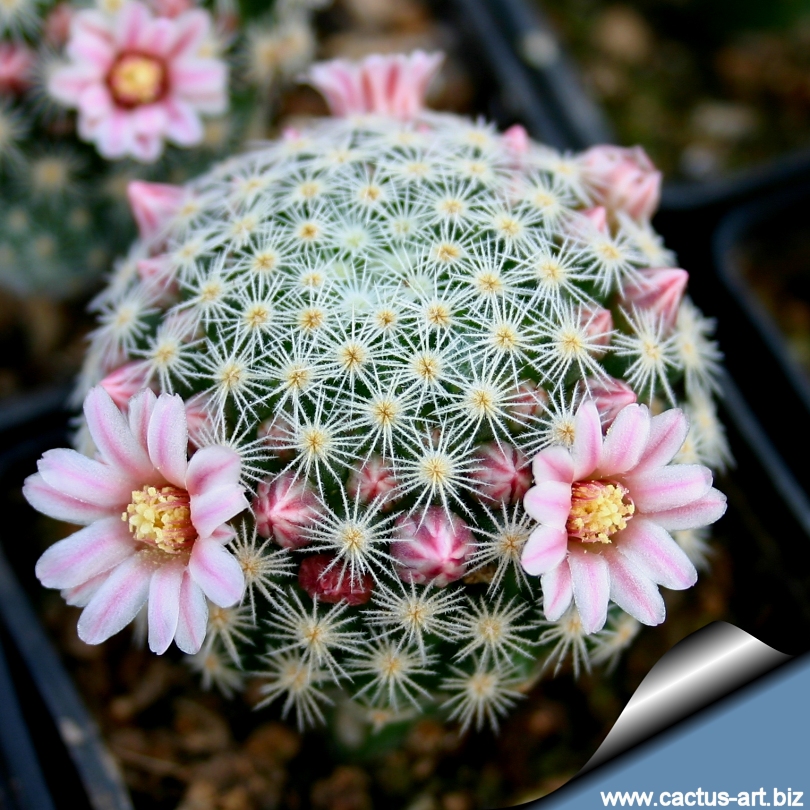
Mammillaria shiedeana ssp. giselae
|
|
Description: Clustering with up to
15, or rarely as many as 35 stems. Individual cluster up to 10 cm in
diameter (or more in cultivation).
Stem: Small, ovoidal to
cylindrical, 35 (rarely to 180) mm high. Without latex.
Tubercles: Cylindrical,
pale green, with a watery sap. Axil naked.
Radial spine: about 16-21 radials ( 2- 5 mm long), fine,
needle-like, feathery, flexible, somewhat pectinated, white, yellow to
almost orange.
Central spine: Usually 1 or 2, (sometime up to 5, or absent) set
between the series of radials and very short, from 0.17 mm long.
Flowers: Pale pink to pink, with darker, narrow
midstripes, 12 - 14 mm long, 10 - 13 mm in diameter.
Blooming season: End of winter in February-March.
Fruit: Red.
Seeds: Black.
Subspecies:
M. shiedeana ssp. giselae. It has 16-21 very thin flexible
radial spines per areole, and no bristley hairs in the axils. The
flowers are pinkish.
M. shiedeana ssp. schiedeana has up to 120 thin radial
spines per areole. The flowers are white.
M. shiedeana ssp. dumetorum has less than 50 radial spines
per areole and are stiffer than the fine spines of 'ssp. Schiedeana'.
The flowers are near white.
|
|
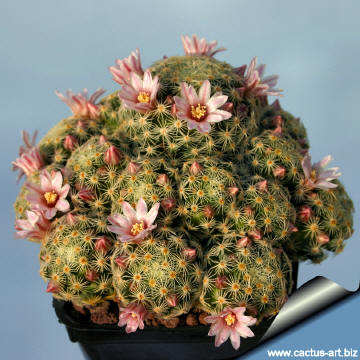 |
 |
|
. |
|
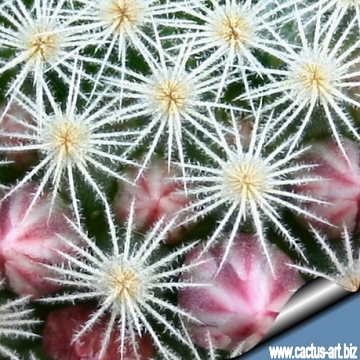
The feathery spines |
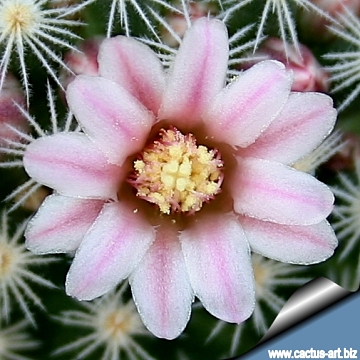
Flower |
|


Advertising
|
|
|
|
|
Scientific name:
Mammillaria
schiedeana ssp. giselae (Mart.-Avalos
& Glass) Lüthy 1998
Origin: Mexico (Tamaulipas)
Habitat: Grows among rocks, on fertile soils
rich in dark organic material produced by the decomposition of vegetable
matter in open pinion woodland, 700-1400 mt altitude.
Etymology: Named after Prof. Gisela
Gallegos Hernandez , wife of the
Mexican botanist JG Martinez- Avalos.
Conservation status: Listed in
CITES appendix 2.
Series: Lasiacanthe
Group: Mammillaria schiedeana
Synonyms:
- Mammillaria giselae J.G.
Martinez-Avalos & Glass
In: Bradleya 15: 73 (1997)
|
|
|
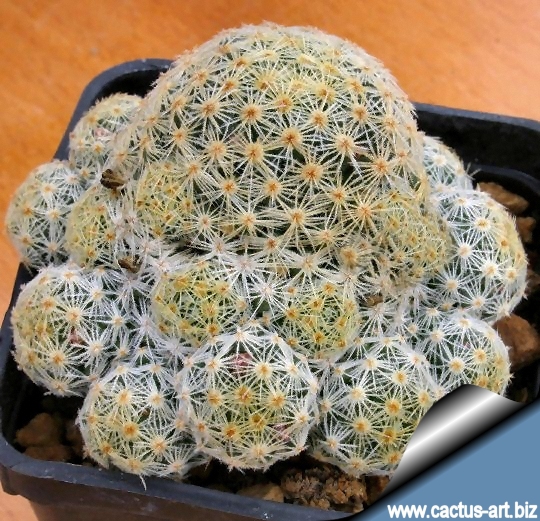 |
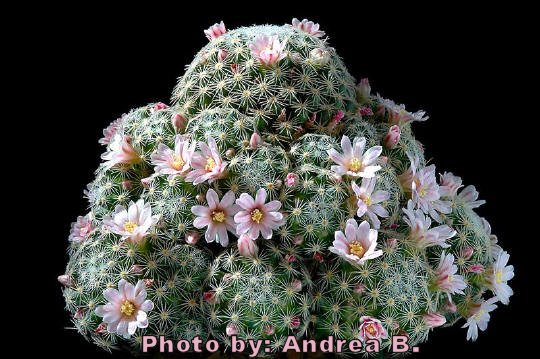
A photo courteously provided by Andrea B.
|
|
Cultivation: It is a
slow growing species
of easy culture, recommended for any collection, it doesn't require any
special treatment. Water regularly in summer, but do
not overwater (Rot prone)
Use pot with good drainage and a very porous potting media,
keep dry in winter.
Feed with a high potassium
fertilizer in summer.
It is quite frost resistant if kept dry, hardy as low as -5° C (some
reports give it hardy to -5°C)
Sun Exposure: High levels of light are needed to
flower and for good spine development.
Can be sunburned if moved
from shade/greenhouse into full sun too quickly. During the spring it
may be able to take full sun until the heat arrives at the end of
spring. In an area that has hot afternoon sun, it may be able to take
full morning sun, but requires afternoon shade or afternoon light shade.
If grown correctly, it will reward the grower with generous
displays of purple flowers.
Clustering in cultivation after several years and easily flowered.
For best results, use a shallow pot, and only use the smallest
diameter pot that will accommodate the plant.
Propagation: Direct sow after last frost
(usually) or division, wait
until the
offsets that appear at the
base of old clustered
specimens
are 1/3 the size of the parent and then detach and plant.
(Cuttings root quickly)
|
|
Photo of conspecific taxa, varieties, forms and
cultivars of
Mammillaria schiedeana:
|
|